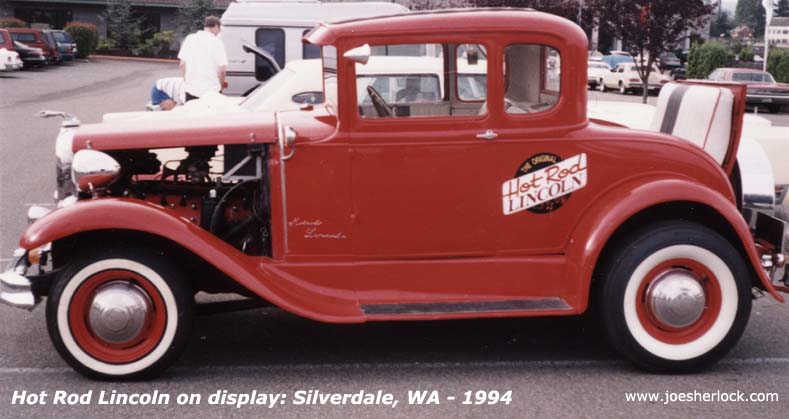

Bond released a sequel in the same year called “X-15”, set in 1997, about an air race in an X-15 plane.Īnother cover version, by country rock band Commander Cody and His Lost Planet Airmen on their 1971 album Lost in the Ozone, became the most successful version of “Hot Rod Lincoln,” reaching No. Route 95 in Idaho) to the top of Lewiston Hill he incorporated elements from this race in his lyrics to “Hot Rod Lincoln”, but changed the setting to Grapevine Hill (a long, nearly straight grade up Grapevine Canyon to Tejon Pass, near the town of Gorman, California) to fit it within the narrative of “Hot Rod Race”.Ī cover version of “Hot Rod Lincoln” was recorded by country musician Johnny Bond and released in 1960 through Republic Records, with Bond’s lyrics changing the hot rod’s engine from a V12 to a V8. Ryan raced his hot rod against a Cadillac sedan driven by a friend in Lewiston, Idaho, driving up the Spiral Highway (former U.S. Ryan based the description of the eponymous car on his own hot rod, built from a 1948 12-cylinder Lincoln chassis shortened two feet, with a 1930 Ford Model A body fitted to it. A second version was released in 1959 through Four Star Records, credited to Charlie Ryan and the Timberline Riders. Ryan’s original rockabilly version of the song was released in 1955 through Souvenir Records under the artist name Charley Ryan and the Livingston Bros. “Hot Rod Lincoln” is sung from the perspective of this third driver, whose own hot rod is a Ford Model A body with a Lincoln-Zephyr V12 engine, overdrive, a four-barrel carburetor, 4:11 gear ratio, and safety tubes. It was written as an answer song to Arkie Shibley’s 1951 hit “Hot Rod Race” which describes a race in San Pedro, Los Angeles between two hot rod cars, a Ford and a Mercury, which stay neck-and-neck until both are overtaken by “a kid in a hopped-up Model A”.

The group then recorded Astronaut Girl and released it in March of 2001 on Hep Cat Records.“Hot Rod Lincoln” is a song by American singer-songwriter Charlie Ryan, first released in 1955. In 1999, Joey Galvan joined the group to replace Dave Bernson. This move gained Hot Rod Lincoln a new segment of fans, confirmed their staying power, and proved that the changes in popular trend would not sway their devotion to the classic rockabilly sound. For the She Devil Records' release of 1997's Hot Rod Girl, Hot Rod Lincoln served as the backing band to vocalist Josie Kreuzer. Even if the late '90s saw a significant turn for the worse in regard to the popularity of their genre, Hot Rod Lincoln outlasted the flash-in-the-pan rockabilly revivalists. The record was produced by Lee Rocker of the Stray Cats and with Blue Café, their exploration of their earlier roots were even more thorough than before, giving nods to early surf and rock & roll legends such as Carl Perkins, Eddie Cochran, and Bill Haley & the Comets. He was undoubtedly a large influence on the band and one of the key players in the national resurgence of the rockabilly and swing mania of the early and mid-'90s. Their third release, Blue Café, was independently released in October of 1997, and included a title-track that was written for the band by Setzer. The Boulevard solidified the trio's sound, which was firmly planted in the Southern California tradition of melding rockabilly and psychobilly with a touch of surf, wrapped in the highly stylized leopard-print sheik of other rockabilly revivalists like Brian Setzer's Stray Cats and Southern Culture on the Skids. Hot Rod Lincoln received warm reviews and caught the attention of Dionysis Records, who released their second full-length, The Boulevard, in 1996. The band first self-released their eponymous debut in 1994, near the peak of the short-lived swing revival. Forming in San Diego in 1993, the group gained a modicum of regional and national notoriety after they won Best Roots/Rockabilly/Swing Band at the 1997 San Diego Music Awards. d'Artenay (vocals and upright bass), and Dave Bernson (vocals and drums), the heart of Hot Rod Lincoln's sound lies in the tradition of '50s rockabilly and early rock & roll. Originally made up of Buzz Campbell (vocals and guitars), Johnny G.


 0 kommentar(er)
0 kommentar(er)
